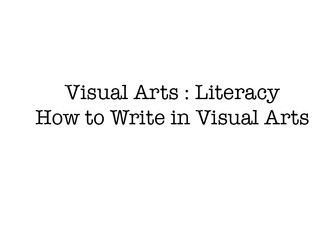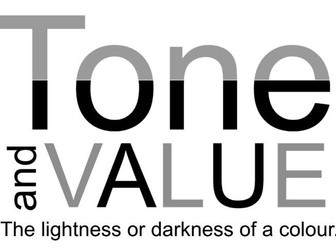
Visual Arts Literacy - How to Write about Art
Visual Arts Literacy - How to Write about Art
Introduce your students to the art of writing with our engaging and educational worksheet designed to enhance their sentence construction skills while exploring famous artworks. This worksheet provides a structured approach to understanding and creating various types of sentences, making it an invaluable resource for developing both writing proficiency and art appreciation.
Worksheet 1: Sentence Construction
What’s Included:
Simple Sentence Construction:
Students learn to create simple sentences by combining one subject and one verb to express a complete thought.
Example: “The Mona Lisa smiles.”
Compound Sentence Construction:
This section teaches students how to join two separate sentences to form a compound sentence.
Example: “The Mona Lisa smiles, and The Scream captures existential dread.”
Complex Sentence Construction:
Students are introduced to complex sentences, which add extra information to one main sentence.
Example: “While The Mona Lisa smiles, The Scream captures existential dread.”
Compound-Complex Sentence Construction:
Students learn to combine both compound and complex sentences to form compound-complex sentences.
Example: “The Mona Lisa smiles, and The Scream captures existential dread while Starry Night depicts swirling madness.”
Create Their Own Sentences:
After learning each sentence type, students are encouraged to construct their own sentences using other artworks as inspiration.
Worksheet 2: Connecting Verbs in Art Description
What’s Included:
Introduction to Connecting Verbs:
Students learn about connecting verbs and their role in linking the subject of a sentence with additional information.
Using Nouns, Relating Verbs, and Complements:
Students practice constructing sentences that describe artworks using nouns, relating verbs, and complements.
Example: “The painting is vibrant.”
Example: “The sculpture appears lifelike.”
Practice Sentences:
Students are given a list of nouns (e.g., painting, sculpture, drawing), relating verbs (e.g., is, appears, seems), and complements (e.g., vibrant, lifelike, abstract) to create descriptive sentences about artworks.
Create Their Own Descriptions:
Students apply what they’ve learned by writing their own sentences describing various artworks, ensuring they use nouns, relating verbs, and complements effectively.
Educational Benefits:
Writing Skills Development: Students will practice constructing sentences of varying complexity, enhancing their writing abilities.
Art Appreciation: By using examples of famous artworks, students gain exposure to significant pieces of art and their themes.
Critical Thinking: Combining sentence structure lessons with art analysis encourages students to think critically about both language and visual art.

